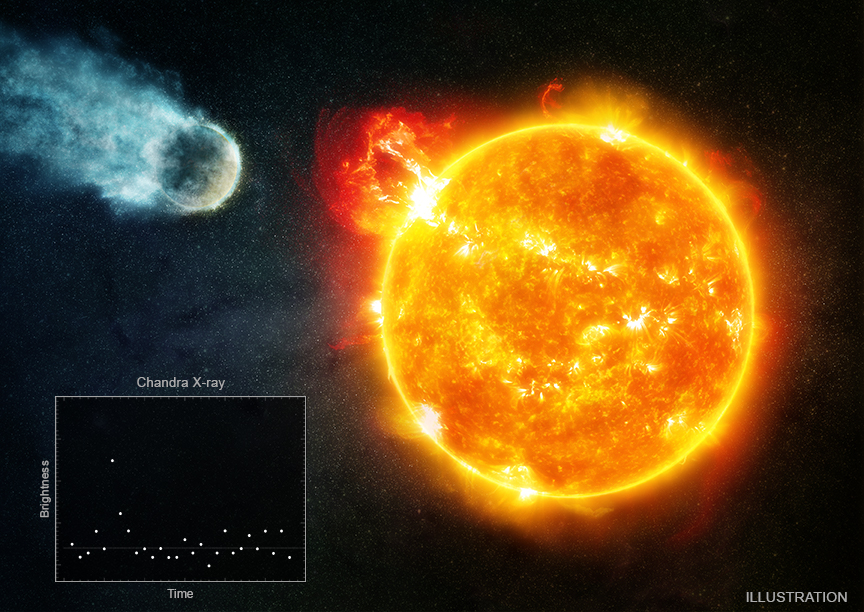
 Credit: X-ray light curve: NASA/CXC/University of Colorado/K. France et al.; Illustration: NASA/CXC/M. Weiss
Credit: X-ray light curve: NASA/CXC/University of Colorado/K. France et al.; Illustration: NASA/CXC/M. Weiss
Dying with a Star?
There are lots and lots of tiny, faint red dwarf stars, which make up perhaps more than half the nearly 1 billion stars in our Milky Way. And many if not most of these stars have a planet orbiting them (or two or three or five), and many of those planets reside in the star's habitable zone, where liquid water (and life) can in principle exist. How many of these millions or billions of stars in our Galaxy support life? The ironic thing is that, because red dwarfs are so dim, these potentially habitable planets must orbit very close to their host stars. Red dwarf stars are dangerously active, since they have strong magnetic fields which drive stellar explosions, scaled-up versions of solar flares. What impact do these strong stellar "superflares" have on any nearby planets? A recent study of the X-ray activity by the Chandra X-ray Observatory of Barnard's star has helped to answer this question. Barnard's star is one of the nearest red dwarfs to earth, only 6 lightyears away. Chandra observations of Barnard's star showed a strong X-ray outburst produced by a stellar flare in an observation lasting only 7 hours. The image above is an artist's illustration of a planet in the habitable zone around a red dwarf similar to Barnard's star. The inset shows the X-ray brightness of Barnard's star during the Chandra observation; a large increase in X-ray brightness occurs near the start of the observation. This observation suggests that about 25% of the time, Barnard's star erupts in potentially dangerous superflares. The most damaging effects of these flares would be to help strip away any atmosphere around the planet, making life on the planet unlikely, if not impossible.
Published: November 2, 2020
<
HEA Dictionary ● Archive
● Search HEAPOW
● Other Languages
● HEAPOW on Facebook
● Download all Images
● Education ● HEAD
>

Each week the HEASARC
brings you new, exciting and beautiful images from X-ray and Gamma ray
astronomy. Check back each week and be sure to check out the HEAPOW archive!
Last modified Tuesday, 27-Feb-2024 10:09:57 EST


